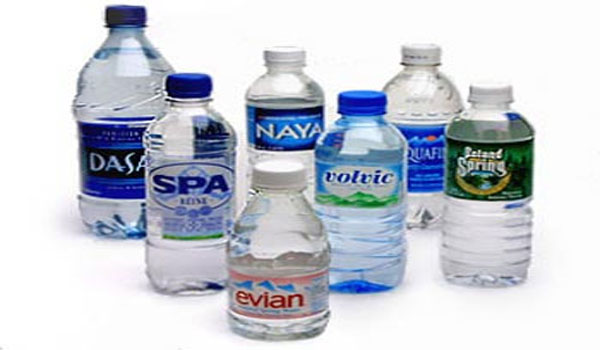Widespread consumer demand for plastic products
that are free of the hormone-disrupting chemical bisphenol-A (BPA) has
led to some significant positive changes in the way that food, beverage
and water containers are manufactured. But a new study out of Germany
has found that thousands of other potentially harmful chemicals are
still leeching from plastic products into food and beverages, including
an endocrine-disrupting chemical (EDC) known as di(2-ethylhexyl)
fumarate, or DEHF, that is completely unregulated.
Martin Wagner and his colleague, Jorg
Oehlmann, from the Goethe University Frankfurt, in conjunction with a
team of researchers from the German Federal Institute of Hydrology,
learned this after conducting tests on 18 different bottled water products to look for the presence of EDCs. Using an advanced combination of bioassay work and high-resolution mass spectrometry, the team identified some 24,520 different chemicals present in the tested water.
But of major concern, and the apparent
underpinning of the study’s findings, was DEHF, a plasticizer chemical
that is used to make plastic bottles more flexible. According to
reports, DEHF was clearly identified in the tested water as the most
consistent and obvious culprit causing anti-estrogenic activity. Despite
trace amounts of more than 24,000 other potentially damaging chemicals,
DEHF stood out as the only possible EDC capable of inducing this
particular observed activity, a highly concerning observation.
The study’s published abstract explains that 13 of the 18 bottled water products
tested exhibited “significant” anti-estrogenic activity, while 16 of
the 18 samples were found to inhibit the body’s androgen receptors by an
astounding 90 percent. Additionally, the other 24,520 chemical traces
besides DEHF were also identified as exhibiting antagonistic activity,
which means that they, too, are detrimental to the body’s hormonal
system.
Many thousands of endocrine-disrupting chemicals used in plastic production prove material unsafe
But DEHF is apparently not alone in
causing significant damage to the endocrine system, as the team was
unable to identify this chemical as being specifically anti-androgenic.
What this suggests is that there is some other chemical, or chemical
combination, being leeched into bottled water that is interfering with
the body’s chemical signaling system, which is, of course, responsible
for hormone production and use within the body.
“We confirmed the identity and
biological activity of DEHF and additional isomers of dioctyl fumarate
and maleate using authentic standards,” report the researchers. “Since
DEHF is anti-estrogenic but not anti-androgenic we conclude that
additional, yet unidentified EDCs must contribute to the antagonistic
effect of bottled water.”
So while these specific findings
concerning DEHF are groundbreaking, the overall conclusion to be drawn
from this research is that far more study is needed to determine the
types of chemicals that are being leeched from plastic into our food and
water, not to mention the extent of this leeching. And since the U.S. Environmental Protection Agency (EPA), the U.S. Food and Drug Administration
(FDA) and the rest of the three-letter government agencies will surely
never get around to conducting this important research, independent
science will simply have to take up the charge.
“This work is a ‘tour de force’ in identification
of endocrine disruptors in packaged materials,” says Bruce Blumberg
from the University of California, Irvine, as quoted by Chemistry World.
This type of analysis, he adds, “will be very important for our future
understanding of what chemicals we are routinely exposed to and which of
these pose hazards of being endocrine disruptors.”
You can read the full study abstract here:
www.plosone.org
www.plosone.org
In the meantime, conscious consumers can avoid plastic containers whenever possible and simply use glass or steel containers instead to avoid these unknown risks.
Sources for this article include:
Please share this.


No comments:
Post a Comment